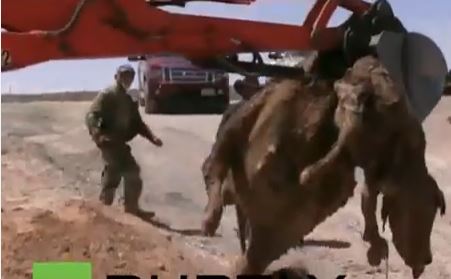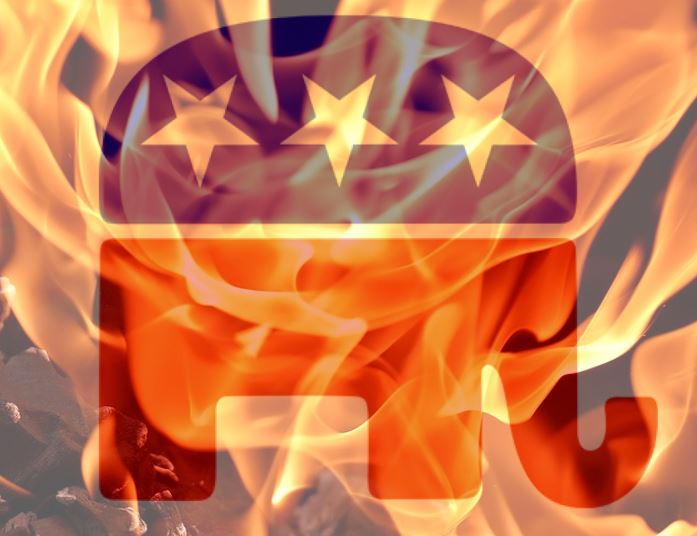The Pahvant Post and people associated with it are catching flack for rocking the boat in a variety of ways in Millard County. This whole thing started out based on concerns about county land-use regulation issues. On a similar front other individuals in Utah, including State Rep. Ken Ivory, and House Speaker Becky Lockhart, are being called radical extremists, and starting to catch a lot of flack from people around the country for lea ding the movement to rock the boat regarding federal ownership and management of public lands — an issue in which Utah has been taking a leading role, that seems increasingly to be gaining traction, and has now even gained footing with the Republican National Committee.
ding the movement to rock the boat regarding federal ownership and management of public lands — an issue in which Utah has been taking a leading role, that seems increasingly to be gaining traction, and has now even gained footing with the Republican National Committee.
As happens in most such situations, the powers-that-be are pushing back hard to defend and maintain the status quo.
As originally reported on ksl.com, defenders of federal management are ramping-up their push-back campaign. www.ksl.com/?sid=31141100&nid=148&title=salazar-sportsmen-angry-over-utah-led-public-lands-movement&fm=home_page&s_cid=queue-1 Where do you stand on this issue, and land use issues in general, whether public or private? Who should control land use? Who should own and manage the public lands? Is transfer of public lands an extreme idea that should be rejected out of hand, or should it be explored? How does this relate private land-use issues?
 SALT LAKE CITY — A states’ rights, public lands movement with its genesis in Utah was blasted by former Interior Secretary Ken Salazar Thursday as an effort that threatens to undo the successes of American conservation policy.
SALT LAKE CITY — A states’ rights, public lands movement with its genesis in Utah was blasted by former Interior Secretary Ken Salazar Thursday as an effort that threatens to undo the successes of American conservation policy.
“This would roll back 100 years of public lands progress,” he said in a teleconference hosted by the National Wildlife Federation.
“This would cause Teddy Roosevelt to roll over in his grave if he knew what the Republican National Committee’s position was in respect to our public lands.”
Roosevelt is regarded as the presidential architect of public lands conservation in the United States, creating a flurry of national parks, monuments and wildlife refuges under his administration, as well signing the Antiquities Act into law that gives presidents the executive power over such decisions.
In the teleconference, Salazar emphasized that a resolution endorsed by the Republican National Committee in favor of the Western states’ movement is wrong-headed.
“These lands are the nation’s birthright,” he said. “They do not belong to one state.”
The Transfer of Public Lands Act was passed in Utah two years ago and calls on the federal government to cede title to lands that some say were supposed to be “disposed” of at statehood.
Sponsored by Rep. Ken Ivory, R-West Jordan, the law is at the center of a movement that has gained political traction among Utah’s neighbors and sympathetic support from critics who say the federal government has too much control in the West.
The effort seeks transfers of vast swaths of Forest Service and BLM lands into state or private control, generating revenue that would support cash-strapped public school systems.
 In Utah, more than 65 percent of the land is under the purview of the federal government, which “take back” supporters say puts the state at an economic disadvantage when it comes to tax revenues.
In Utah, more than 65 percent of the land is under the purview of the federal government, which “take back” supporters say puts the state at an economic disadvantage when it comes to tax revenues.
But critics say to sell or trade off public lands is to relinquish lands cherished by U.S. citizens and envied by countries around the world.
“America’s national parks, monuments and rugged landscapes are not only a draw for people in this country but across the globe,” said Peter Metcalf, president and chief executive officer of Salt Lake City-based Black Diamond, a clothing and outdoor equipment company. “No other country in the world has the public land infrastructure that we have.”
While the anti-public lands movement — at least in Utah — does not seek to dismantle national parks or monuments, Metcalf said he sees it as a real threat to the outdoor recreation economy.
“I see no other issue as strategically threatening to the vibrancy of one of America’s most significant, sustainable and growing sectors … and the American outdoor industry is the world’s leader. It is one of the few industries where America still dominates.”
Metcalf said he first heard of the anti-public lands movement about 18 months ago, an ideological mission he said most dismissed out of hand because it was so “right-wing and so unimaginable.”
“Now, because of our deafening silence and the fact that we did not mobilize earlier, something that people thought was inconceivable … is actually a plank in the Republican National Committee. Clearly it has gained momentum.”
Utah has led out in a public policy and legislative push against continued federal land management and in Congress, a number of bills seek to rein in the power of agencies like the BLM and the Forest Service.
 The festering resentment over federal land management policies on such activities like grazing, wild horses, oil and gas development, forest management and endangered species has crystallized in conflicts like that of defiant ATV ride in San Juan County.
The festering resentment over federal land management policies on such activities like grazing, wild horses, oil and gas development, forest management and endangered species has crystallized in conflicts like that of defiant ATV ride in San Juan County.
The federation’s Collin O’Mara said booting the public off the land, however, is not the answer.
“Resolutions like these cut against more than a century’s worth of precedent,” he said, noting that he’d visited the Salmon River area of Idaho recently, reveling in its beauty.
“The idea that lands like those could be closed off from visitors, from residents, from wildlife lovers of all stripes is a terrifying proposition because of the connection with nature that could be lost through these kind of activities,” said O’Mara, the federation’s president and chief executive officer.![]()




I haven’t read what is being proposed by Ken Ivory or Becky Lockhart regarding the State’s rights, but what is missing in this information are the details of what they are actually proposing be done with the land, and if they want all 65% of the federally managed lands or a portion of them. It is hard to know who should own it until you see what they propose doing with it. My guess would be that there is a medium that can be reached between the two that would be good for Utah and cut back on the Federal Government regulations that are choking everybody in this country. There aren’t many that wouldn’t agree that the recent issues we have all seen with the BLM show that the federal government has far overreached where they should. They need to be seriously reigned in and some rights need to be given back to the states and the citizens of this country. I do agree with the statement that at least a portion of these lands need to be maintained for public use and whatever the resolution, it can’t all be closed to the public.
Salazar’s comment about Roosevelt rolling over in his grave is probably accurate, but not for the reason he is giving. Teddy Roosevelt is rolling over in his grave with every other previous president as they watch what our government has become. A tyrannical, dictatorship that doesn’t give one iota what the citizens want or need. They need to get over themselves and we do need to roll the clock back to a time when reason and fairness prevailed. The problems we have now is because the government didn’t stop at national parks that would bring generations of enjoyment to the public. They now own land that they have NO business owning just because they decided they should.
If we had sane minds in Washington DC, we would be able to sit down and hash this out and come to a fair resolution that would benefit the state, the government, and the public. But I’m going to go out on a limb here and guess that we will never see that day. The government stopped caring about everything except gaining more and more power years ago. All we have now is a ravenous monster that can’t ever get enough.
The Pahvant Post has published (or republished) at least two previous articles on this subject. See links below.
http://www.pahvantpost.org/western-states-federal-lands-summit/
http://www.pahvantpost.org/public-lands-debate/
The proposal is that the vast majority of federal lands (excluding national parks and monuments, etc.), would be transferred to the states, to be owned and managed by the states.
The argument is that the Western states do a much better job, and are more capable of doing a better job, managing such lands and natural resources than the Federal Government is.
Opponents of this idea try to make it sound like any such transferred lands would automatically be closed to the public. But that is a nonstarter. The states already own and manage a considerable amount of state school trust land, most of which is open to public use.
While it is true that some of the land in question might be transferred into private ownership, the vast majority of it would probably remain public land, open to public use, but simply owned and managed by the states, instead of the federal government. In a state with approximately 90% public land, it looks like there’s a long way to go before transfer of some of this property into private ownership would even be an issue.
Thanks for the links that I missed, and the overview. It is obvious that the statements made in the earlier article that the shift in ownership would close the land for public use is off the wall. Nobody would agree to that and they are just reaching for something to dramatize the issue. Sitting down and rationally discussing what is best for the state and the counties is a no brainer. Obviously, that means nothing in the government’s world.